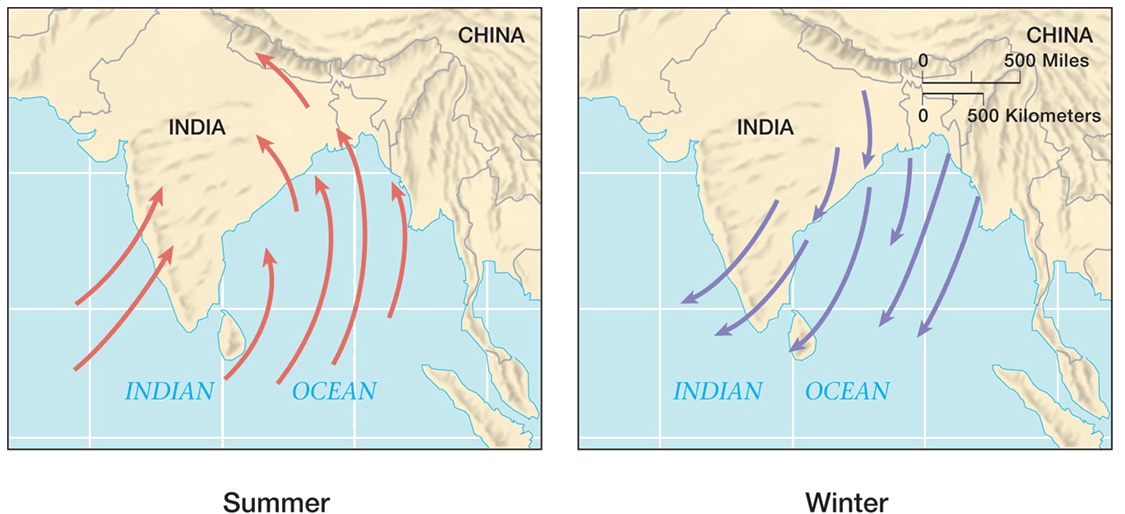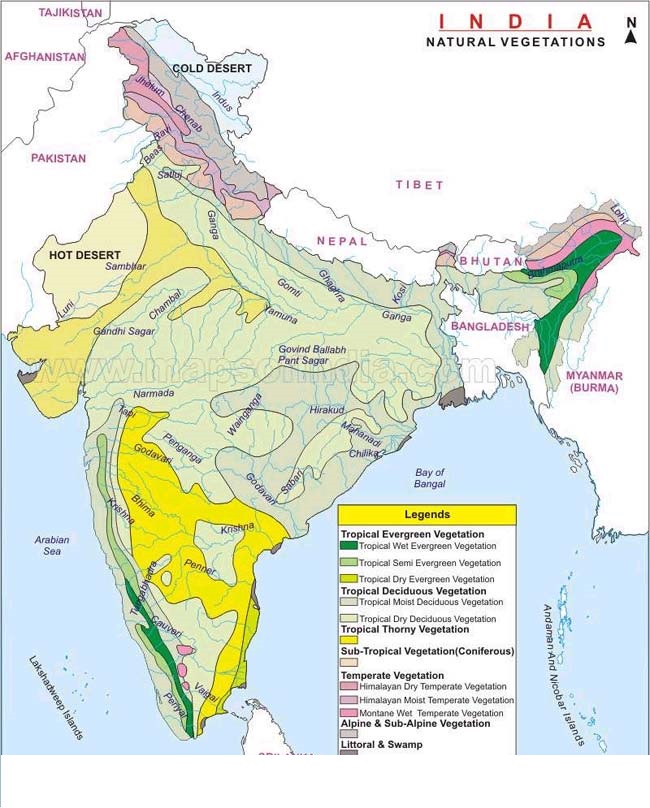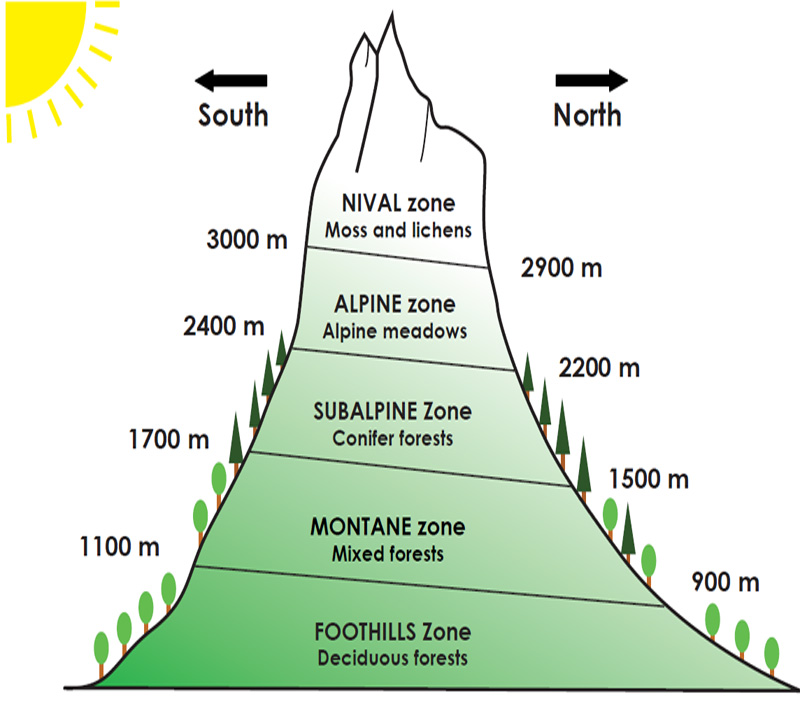-
Chapter 3: SEASONS
Introduction
- Seasons in India are of four broad categories:
- Summer [ hot weather season] March to May
- Winter [ cold weather season] December to February
- Rainy [ southwest monsoon season ] June to September
- Autumn [ season of retreating monsoon] October – November
- Weather is the day to day or hour to hour condition of the atmosphere. The average weather conditions of a place for a longer period are known as climate. Climate of a place is dependent on its distance from the sea, altitude, location and relief.
Weather and Conditions
The northern part of India falls in the sub tropical and temperate zone and the southern part lies in the tropical zone. The southern region has smaller annual and diurnal temperature range but the northern region has higher range.
People living on the coast have an equable temperature throughout the year due to moderation by sea but people living in the interiors experience extreme weather.
In places that are colder, the air becomes heavy. The cold heavy air sinks and creates a high pressure. High pressure area is associated with a clear sunny sky.
Indian winter:
1. Apparent movement of the sun to the southern hemisphere. The northern region becomes colder and high pressure conditions develop on the north of the Himalayas.
2. The air flows from this region to the Indian subcontinent south of the Himalayas.
3. These surface winds blew from central India to the Indian subcontinent as dry air mass. They also come in contact with the northwestern trade winds.
4. At the upper level of troposphere 9-13 km from the surface the jet stream blows from west to east in the area north of the Himalayas, at the Tibetan plateau the jet stream gets bifurcated. The northern arm blows eastward parallel to the Tibetan plateau and the southern arm goes to the south of the Himalayas.
5. This southern arm is responsible for Indian winters.

Fig 1: Indian winter
Vegetation of India is divided into five types:

Fig 2: Vegetation map of India
- Tropical evergreen forest: occur in areas with heavy rainfall. They are so dense that sunlight doesn’t reach the ground. Many species of trees are found here that shed their leaves at different points of the year. As a result they always appear green and hence are called evergreen. E.g. Mahogany, ebony, rosewood.
Tropical forest is well stratified. Layers closer to the ground are covered with shrubs and creepers, followed by short structured trees and tall structured trees.
- Tropical deciduous forest: these trees are found in a large area in India. The shed their leaves at a particular time of the year. E.g. Sal, Teak, Neem, Peepal and Shisham.
- Thorny bushes: they are found on the dry land where precipitation is scanty. Hence their leaves are modified into spines.
- Mountain vegetation: at height of 1500-2500m trees are of conical shape. These are coniferous trees which are Chir, Pine and Deodhar.
This is of two types southern Montane and northern montane forests.
- Mangrove vegetation: these can survive salty water. India has 7% of the mangroves plantation of the world. 0.14% of its area has mangroves. Sunderban mangroves are the only ones in the world where tiger population is found. Mangroves act as a barrier to landward winds during cyclones and protect the coastal regions.
Mangroves in the eastern region of India are more luxuriant and diverse due to the presence of nutrient rich deltas of the rivers.
The east and northeast margins of continents are covered by temperate evergreen and temperate deciduous trees. The west and southwest margins of continents are covered with Mediterranean vegetation.

Fig 3: Altitude wise vegetation
stratification
In Himachal Pradesh and Arunachal Pradesh, Himalayan yew trees are found that are used to obtain Taxol – a chemical that cures cancers. Quinine – to cure malaria is from cinchona tree, drug for leukemia from vinca rosea. Aspirin – tropical willow tree.
In mountainous regions, the decreasing temperature with increasing altitude leads to corresponding change in the natural vegetation. In this ranges all types of vegetation occur from tropical to tundra. Wet temperate forests are seen between 1000 – 2000 m. between 1500 – 3000 m coniferous forests of temperate types are seen. Above 3600m alpine grasslands are seen. Himalayan ranges are an example of this.
Tropical regions occupy one fourth of the total area of the world but have 75% of the total world population.
Chapter Review
Score more than 80% marks and move ahead else stay back and read again!